Syn.: Rubus carpinifolius Rydb., Rubus continentalis (Focke) L. H. Bailey, Rubus hispidus Marshall, Rubus mississippianus L. H. Bailey, Rubus nitidus Raf., Rubus okeechobeus L. H. Bailey, Rubus rubrisetus Rydb., Rubus sanguinolentus Link, Rubus tallahasseanus L. H. Bailey, Rubus trivialis var. serosus L. H. Bailey, Rubus procumbens Muhl. ex W. P. C. Barton
Family: Rosaceae Juss.
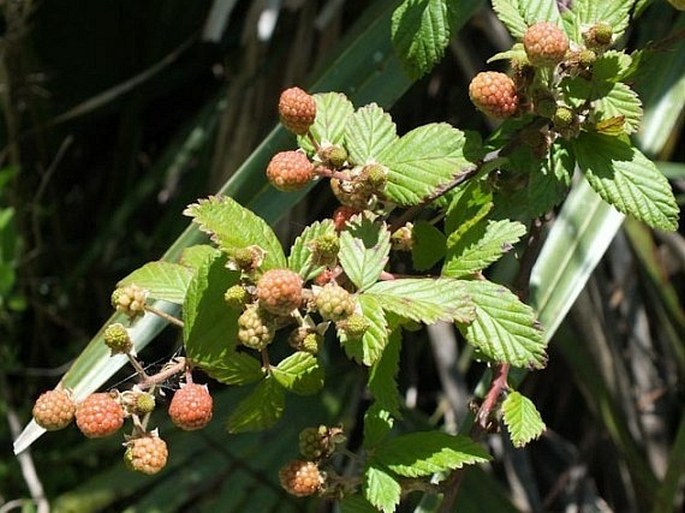
Distribution: North American species found south eastern part of USA from Kansas to Pennsylvania (absent in Indiana and extirpated in Ohio) and southward to the southern border.
Ecology: Lowland species growing in swamps, open mixed forests, sprawling and clinging on other shrubs and trees. Blooms in early spring.
Description: Shrub up to 2.5 m tall, deciduous, stems heavily branching and reaching up to 3 m length, 2–3 mm thick, weak and searching for support on other shrubs or trees, forming spiny thickets, spines (thorns) on all sides of branch, conical, recurved, up to 5 mm in length, pink to reddish base. Leaves alternate, palmately compound, usually 3–5 leaflets, 5 × 3 cm, ovate to obovate, serrated margins. Flowers solitary or in open raceme of 2–5 flowers, from leaf axils, 8–15 mm across, pentamerous, sepals sharply triangular, green, backward bending; petals white, slender, erect. Fruit is a raspberry-like aggregate of drupelets, 12–18 mm, globular to ovoid, black.
Note: Astringent bark of the root of this species was used to relieve diarrhea.
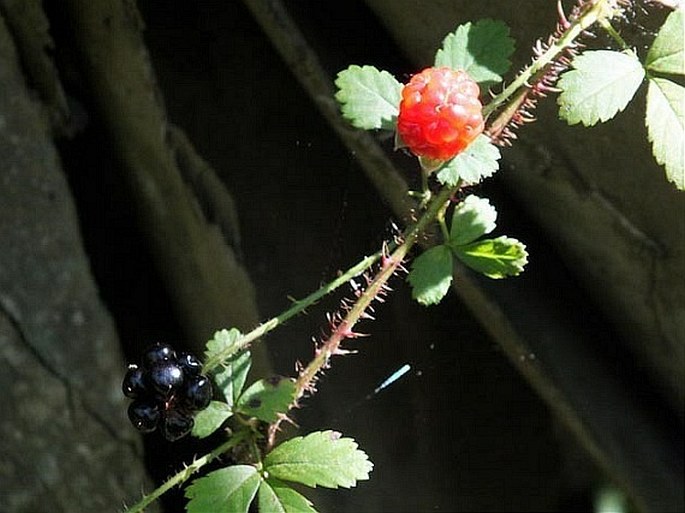
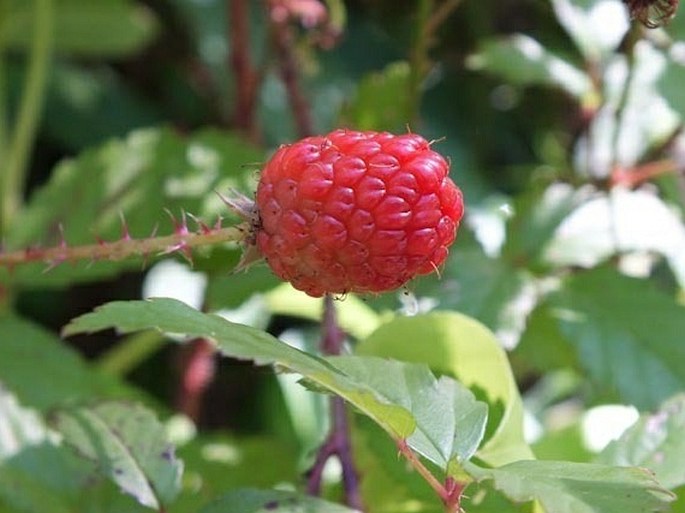
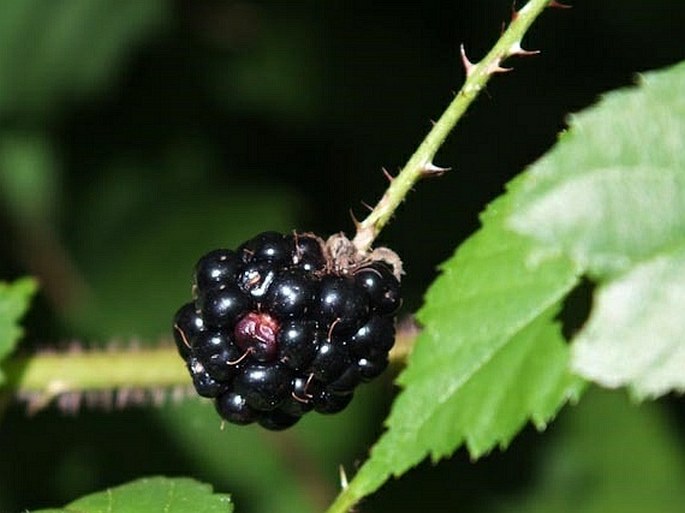
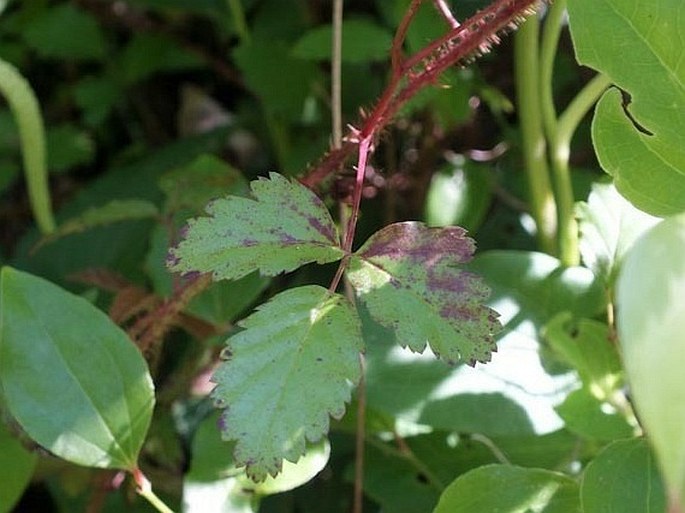
These images were taken in USA, Louisiana, Jean Lafitte National Park (May 2014).


